Introduction
In recent years, amidst a growing interest in health, there has been an increase in patients seeking advanced and meticulous medical care that may not be readily available through standard insurance coverage. In response to such demands, our clinic actively incorporates innovative techniques, including regenerative medicine, to meet these evolving needs.
As part of these endeavors, our clinic offers Platelet-Rich Plasma (PRP) therapy, a form of regenerative medicine. PRP therapy harnesses the patient's own platelets to enhance their self-healing abilities, presenting a groundbreaking treatment modality.
The spotlight on PRP therapy in Japan has grown, particularly with notable athletes like Shohei Ohtani and Masahiro Tanaka opting for PRP therapy to address elbow injuries, mirroring its use in Major League Baseball.
As the possibilities of regenerative medicine expand, so does the scrutiny of its safety and efficacy. We prioritize the health and safety of our patients and strive to support their healthy and active lifestyles by offering cutting-edge medical technology.
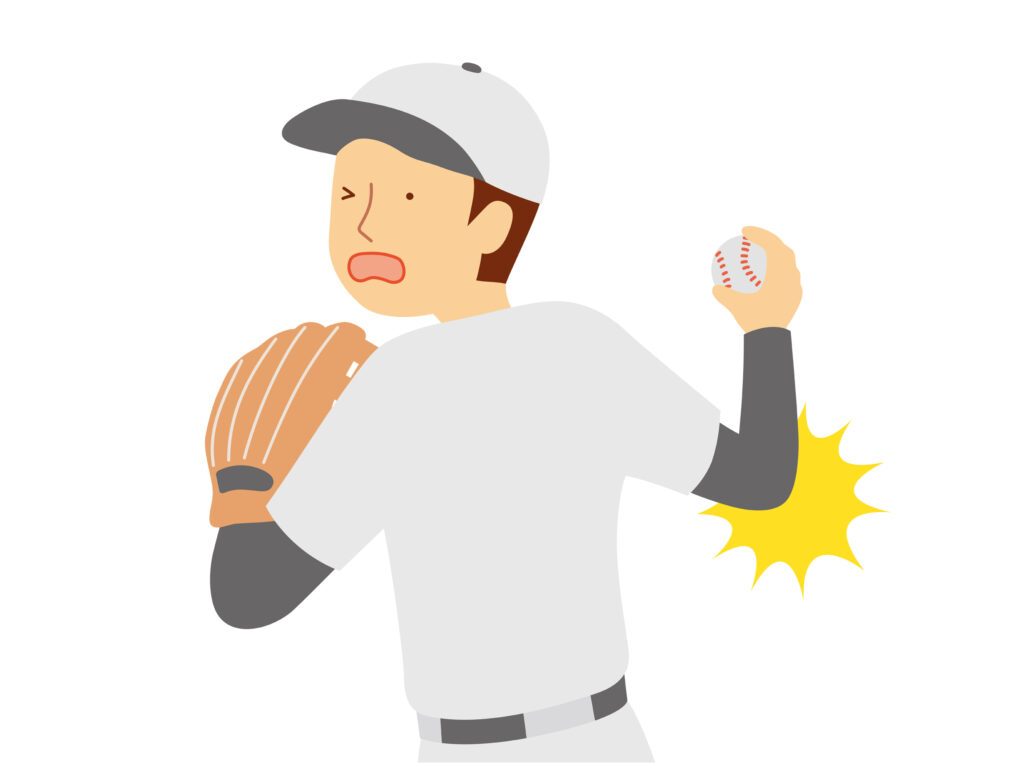
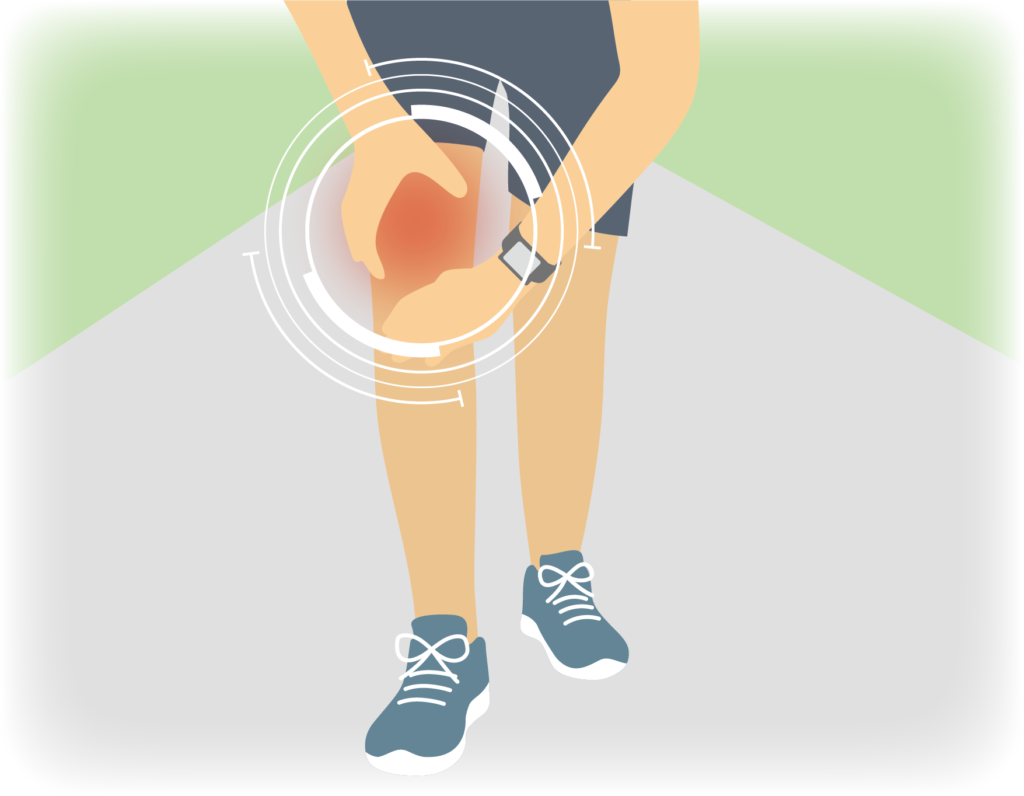

目次
① What is PRP Therapy? Features of PRP Therapy
② Indications for Treatment
③ Our Clinic's PRP Therapy and Its 3 Features
④ Treatment Procedure
⑤ About the Cost
⑥ Side Effects
⑦ Frequently Q&A
① What is PRP Therapy? Features of PRP Therapy
What is PRP Therapy?
PRP (platelet-rich plasma) is a form of regenerative medicine that utilizes the functionality of platelets, a component of blood. Platelets contain abundant growth factors that aid in tissue repair. By harnessing the patient's own blood, PRP therapy enhances self-healing abilities, offering pain relief without the need for surgery.
(However, it's important to note that it does not necessarily reconstruct tissues such as cartilage.)
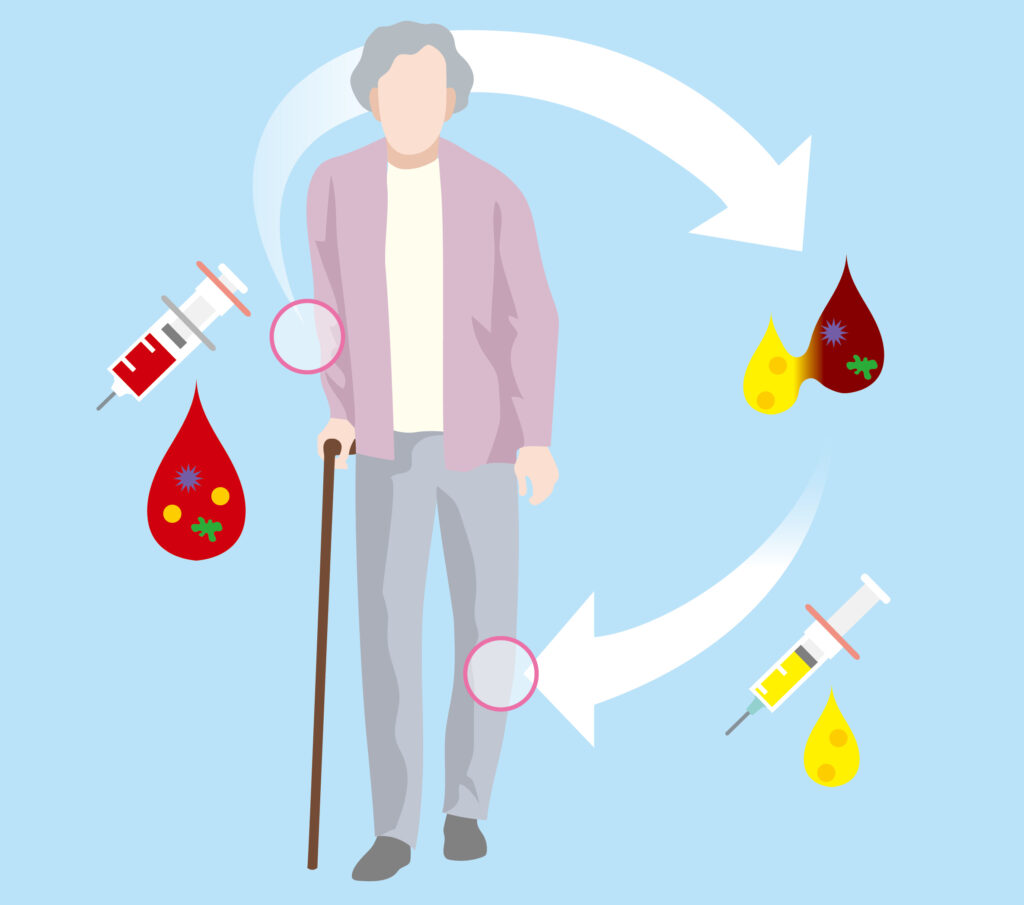
Features of PRP Therapy
- Outpatient Treatment: Patients can receive treatment on the same day as blood collection without the need for hospitalization.
- Non-Surgical Approach: As surgery is not required, there are no associated risks or hospital stays.
- Rapid Recovery: With short treatment durations, patients can return to their daily activities or sports early on.
- Long-lasting Effects: PRP therapy offers prolonged benefits compared to conventional steroid injections.
- Minimal Risk of Side Effects: Since the patient's own blood is used, the risk of allergies or rejection reactions is low.
- Exemption from Doping Concerns: Recognized as non-doping by WADA (World Anti-Doping Agency), athletes can undergo treatment with confidence.
PRP therapy represents an innovative approach to pain management using the patient's own blood. It holds promise for conditions like osteoarthritis of the knee joint and pain in muscles or tendons. Chosen by individuals seeking to avoid surgery and athletes alike, PRP therapy is poised to garner even more attention in the future.

② Indications for Treatment
PRP is utilized to facilitate healing in various tissues, particularly demonstrating potential effectiveness in injuries to joints, ligaments, muscles, and bones.
Representative Indications
The following are conditions for which PRP therapy is considered effective:
- Osteoarthritis (in knees, hips, feet, fingers, etc.)
- Tennis elbow or golfer's elbow (inflammation on the outside or inside of the humerus)
- Baseball elbow (ulnar collateral ligament injury in the elbow)
- Achilles tendonitis
- Jumper's knee (patellar tendonitis)
- Plantar fasciitis
- Carpal tunnel syndrome
- Sprains, ligament injuries, meniscal injuries, muscle strains, tendonitis, stress fractures, etc.
By stimulating tissue regeneration through PRP therapy, alleviation of pain and improvement in function are anticipated.
Patients who Choose PRP Therapy
- Those who wish to avoid hospitalization or surgery
- Individuals for whom surgery is challenging due to age or existing medical conditions
- Patients for whom conventional insurance treatments like steroid injections or braces have been ineffective
- Those for whom other treatments (such as hyaluronic acid injections) have proven ineffective
- Individuals eager to return to sports activities promptly
PRP therapy stands as an effective treatment for numerous conditions and symptoms, serving as a crucial option for patients seeking to avoid surgery or those who have not experienced relief with previous treatments. From common ailments to sports injuries, PRP therapy finds application across various scenarios.
③Our Clinic's PRP Therapy and Its 3 Features
At our clinic, we offer PRP therapy through two distinct methods tailored to individual patients and treatment objectives. While detailed guidance will be provided during consultation, below is a brief introduction to the characteristics of each approach.
① ACP-PRP Therapy
In ACP-PRP therapy, a specially approved medical device is used domestically to create PRP from a small amount of blood (15ml). This method, which has undergone numerous tests domestically and internationally, ensures both safety and efficacy. It is characterized by short waiting times and relatively affordable pricing.
② PRP-FD (Freeze-Dried) Therapy
PRP-FD therapy involves a special processing technique to concentrate the growth factors present in PRP, allowing for long-term preservation. While it offers the prospect of prolonged treatment effectiveness, it requires a waiting period of over two weeks before treatment.
3 Key Features of Our Clinic
① Precise Injections Using Ultrasound Scan
Using ultrasound scanning equipment, we accurately locate small lesions that may be difficult to detect with X-rays or MRIs and administer PRP injections. Treatment guided by ultrasound is known to be more accurate and effective than treatments without it.
② Provision of Rehabilitation
PRP therapy is not a standalone treatment; post-treatment rehabilitation is crucial. Our clinic provides comprehensive rehabilitation facilities, with experienced staff supporting patients in achieving their goals. We are dedicated to addressing pain relief and improving physical capabilities through thorough rehabilitation.
③ Combination with Extracorporeal Shock Wave Therapy (Optional)
Recent studies have shown that the combination of PRP therapy with extracorporeal shock wave therapy (available as a self-pay service) is effective. We offer both treatments in combination, providing a more effective therapeutic approach. This combination offers significant potential for pain relief and improvement in blood circulation.
Duration and Frequency of Treatment
Typically, treatment involves 1 to 3 sessions over a period of approximately 3 to 6 months.
After treatment, the effectiveness of the therapy is assessed based on symptoms and imaging tests.
④ Treatment Procedure
1. Counseling & Examination (Insurance Treatment)
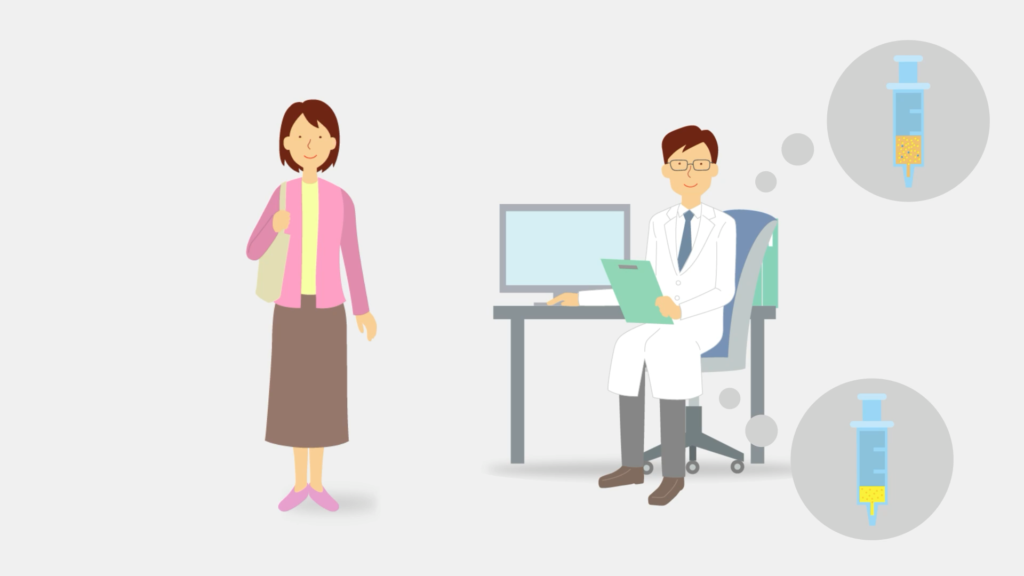
We will assess whether PRP treatment is suitable for you.
- Counseling (Interview)
- Examination
- Imaging Tests
- Blood Tests
- Comprehensive Assessment
※ Depending on the progress of treatment and symptoms, we may suggest alternative treatment methods before considering PRP therapy.
2. Reservation for PRP and Explanation of IC & Consent Forms
After explaining and obtaining consent for PRP treatment, we will make a reservation.
6. Explanation and Consent for PRP Treatment
7. Reservation
8. Prescription
※ Patients using steroids or NSAIDs (such as Loxonin or Voltaren) need a Wash Out period (1-2 weeks) before injection, including oral and topical medications.
Procedure on the Day of PRP Therapy (Self-pay Treatment)
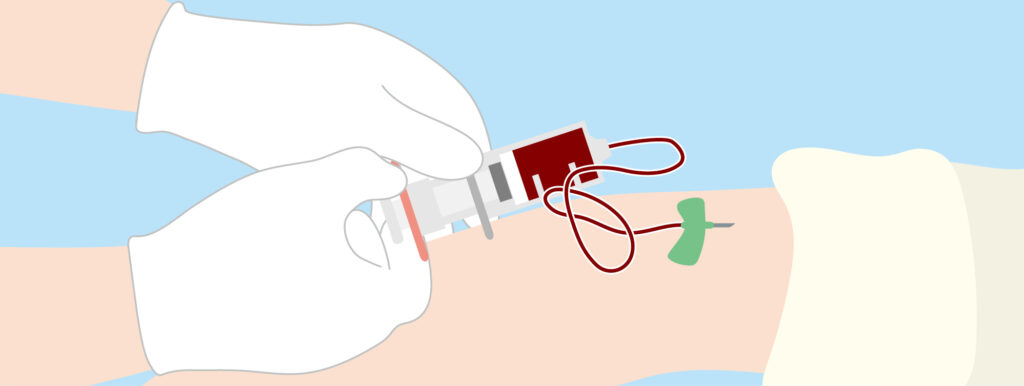
- After registration and confirmation of consent forms, blood collection will be performed.
- The process from blood collection to treatment takes approximately 15-30 minutes.
- After blood collection, the ACP kit is centrifuged for 5 minutes.
- One kit can collect 15ml of blood, producing approximately 3-6ml of PRP.
- After centrifugation, PRP is collected from the kit.
- Under ultrasound guidance, local anesthesia is administered if desired, followed by precise injection of PRP into the affected area.
- For dense connective tissues like damaged tendons or ligaments, injection may cause intense pain due to pressure.
- Following administration, an elastic bandage is applied to immobilize the area for 10 minutes to allow PRP to interact with the damaged tissues.
- If there are no issues with the treated area, patients can return home.
- <Dosage>
According to overseas literature, the effectiveness of PRP is dose-dependent, but it plateaus at concentrations over 6 times the baseline.
Therefore, depending on the patient's condition, we recommend simultaneous administration of 2 kits rather than 1. - <Frequency and Interval of Administration>
According to domestic and overseas literature, for joint diseases, PRP therapy is often administered 3 times every 3-4 weeks as one course of treatment.
We follow a similar schedule at our clinic.
Additional treatments may be considered as needed. - <Combination with Extracorporeal Shock Wave Therapy>
Combining PRP with ESWT has been reported to be more effective in recent years.
As we have introduced a radial shock wave therapy device (ESWT), combined therapy is possible at our clinic.
ESWT induces neurogenic inflammation and reduces pain transmission, which may enhance the effects of PRP therapy.
Therefore, we recommend PRP therapy followed by ESWT treatment before PRP injection.
※ All regenerative medical treatments are completed on the same day.
Post-Treatment Precautions
- Approximately 30 minutes after PRP administration, growth factor release begins, leading to symptoms such as pain in the treated area.
- Immediately after injection, some individuals may have difficulty walking due to pain. However, with ice application and a short rest of 10-15 minutes, most patients can walk home.
- Regarding pain before and after administration, some anti-inflammatory and analgesic medications may interfere with the healing process induced by PRP. Please consult your physician regarding their use.
- Normal daily activities are possible from the day of injection.
- For 3-4 days after treatment, inflammation occurs due to active cellular metabolism, resulting in pain and swelling, which gradually decreases over time.
- Rehabilitation exercises can begin the day after treatment based on pain tolerance. However, avoid acupuncture or extracorporeal shock wave therapy directly on the treated area for one week after PRP therapy.
- For more information, please consult your physician during examination.
- After completing 1-3 sessions of PRP therapy, we evaluate improvements in symptoms, daily activity levels, and changes in X-ray, ultrasound, or MRI findings approximately 3 months and 6 months after treatment.
⑤ About the Cost
| ① ACP-PRP | 55,000 yen per session (tax included) *Scheduled to start from June. |
| ② PRP-FD | 165,000 yen per session (tax included) |
※After confirmation of a positive reaction in the post-blood collection infectious disease test (HIV, HBV, HCV, syphilis, HTLV-1), you will not be able to receive PRP treatment (In that case, you will be responsible for a fee of 16,500 yen (including tax) for blood test and procedural fees)."
⑥ Side Effects
In PRP therapy, the components used for treatment are extracted from the patient's own blood. Therefore, there is no concern about side effects due to immunosuppressive drugs, which are necessary for transplant surgeries using tissues from others. However, the use of injection needles is required for blood collection.
The amount of blood collected is approximately 15mL (up to a maximum of 150mL if necessary), which is a relatively small amount compared to regular blood donations (200mL to 400mL). Thus, it is a procedure with relatively high safety. However, rarely, incidental symptoms and complications may occur during blood collection.
- Pain: Pain may be felt during blood collection, but it usually subsides quickly.
- Feeling unwell or dizziness: Occasionally, feelings of discomfort, dizziness, or nausea may occur.
- Subcutaneous bleeding: Mild bleeding may occur at the injection site.
- Nerve damage: There is a possibility of symptoms such as pain, numbness, or muscle weakness if the injection needle touches a nerve.
On the other hand, potential incidental symptoms and complications during PRP injection include:
- Infection: Measures are taken to prevent contamination, such as bacteria, during the preparation of PRP. However, complete prevention of contamination is difficult, leading to a risk of infection. If infection is suspected, appropriate treatment will be administered.
- Pain: Pain may be felt at the injection site after PRP injection. However, the pain gradually subsides over time.
- Swelling or bruising: Swelling or bruising (turning purple) at the injection site may occur for a few days after the injection, but it will naturally subside.
Although these risks and side effects are relatively rare, appropriate measures will be taken in case of any eventuality, allowing patients to undergo treatment with peace of mind.
⑦ Frequently Q&A
- How long does the pain relief effect last?
In the treatment of osteoarthritis of the knee, an average of about one year of pain relief has been reported. (However, the duration of effectiveness varies from individual to individual, so it cannot be generalized.) - When does the effect appear?
Usually, the effect begins to appear about 1 to 2 weeks after treatment, and it is often felt within 4 to 6 weeks. However, this can vary depending on individual differences and the severity of symptoms. - Are there people who cannot undergo treatment?
Some individuals with blood disorders or those undergoing cancer treatment may not be eligible for PRP therapy. Also, if a positive reaction is confirmed in the infection test (HIV, HBV, HCV, syphilis, HTLV-1) after blood collection, PRP treatment cannot be administered (in such cases, you will still be responsible for the cost of the blood test). Additionally, in cases of severe joint deformity, surgery may be more suitable. The suitability of treatment is determined on a case-by-case basis regardless of age. - Are there any limitations on the number of treatments?
There are no restrictions on multiple treatments. The frequency and number of treatments can be adjusted. A treatment plan tailored to each patient will be developed in consultation with the physician. - What can be done to maintain the effectiveness?
Even after the pain has subsided, the effect can be sustained by combining exercise therapy. Moreover, overweight individuals can reduce joint stress and enhance the effectiveness by losing weight.

